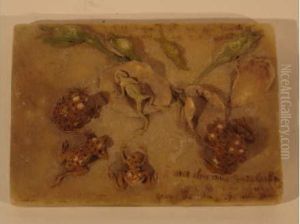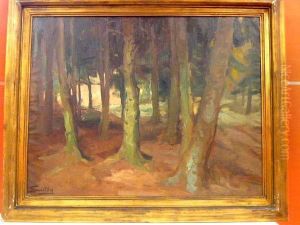Henri Theodore Bouillon Paintings
Henri Theodore Bouillon was a French artist known for his painting and illustrative works during the 19th and early 20th centuries. Born on March 3, 1839, in Versailles, France, Bouillon grew up during a period of significant social and political change, which inevitably influenced his artistic development. He pursued his artistic education at the prestigious École des Beaux-Arts in Paris, where he honed his skills under the tutelage of established painters of the time.
Bouillon's work is characterized by its attention to detail, vibrant color palette, and often featured historical or mythological themes, common among academic artists of his era. He was part of the French academic art movement, which emphasized traditional techniques and subjects, and his style was in line with the neoclassical and romantic traditions that were prevalent during the 19th century.
Throughout his career, Bouillon exhibited his work at the Paris Salon, the official art exhibition of the Académie des Beaux-Arts in Paris. His participation in these exhibitions often garnered positive attention, and he was awarded several medals for his contributions to French art. Despite his presence at these high-profile exhibitions, Henri Theodore Bouillon did not achieve the same level of fame as some of his contemporaries like Édouard Manet or Claude Monet, who were part of the burgeoning Impressionist movement that would eventually overshadow the academic style.
Bouillon's work also extended to illustrations for books and literary works, which was a popular practice among artists of the time to supplement their income and reach a wider audience. These illustrations helped to visualize the narratives and were highly valued in the publishing industry, particularly before the widespread use of photography.
Henri Theodore Bouillon continued to paint and illustrate until his later years, with his artistic output reflecting the dedication to his craft. He passed away on May 25, 1925, in Paris. Although not as widely known today as some of his contemporaries, his works remain a testament to the skill and traditions of academic artists of the late 19th century and provide insight into the art world's transition from neoclassicism to the early stages of modern art.

